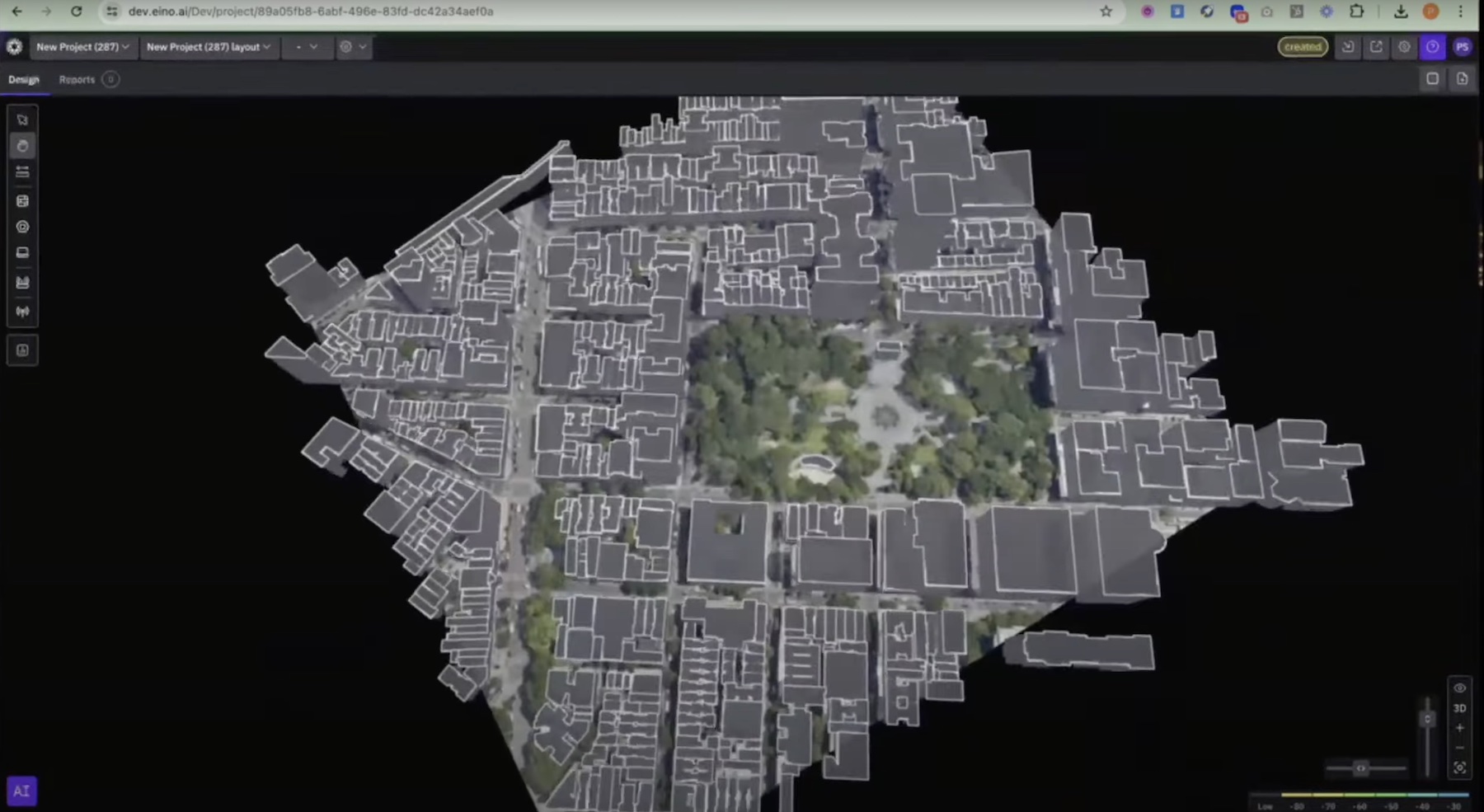Imagine a network that is never down, and everything inside of it operates at full efficiency. Demand and downtimes are anticipated well in advance, and all probable variations and movements are taken into account at the time of the conception of the design.
This is not a fiction. Nor does it have to be the work of accomplished engineers. The networks of tomorrow will be de facto optimized to deliver maximum output by harnessing the force of artificial intelligence (AI).
A small startup based out of Brooklyn, New York, is turning this vision into a reality. eino has developed an AI platform that holds the key to designing smart networks with minimum effort and expense. Its superpower is optimal planning and resource distribution without human expertise.
At the recent Mobility Field Day event, eino debuted their solution to the Tech Field Day audience. Cofounder and CEO, Payman Samadi, offered a walkthrough and demo of all that eino can do across three use cases – Wi-Fi, outdoor private cellular and fixed wireless.
The Guesswork in Network Designing
Network planning and designing has become increasingly complex and cumbersome with the multiplicity and growing criticality of applications. Telecommunication vendors say it is difficult to precisely provision new networks, and draft a design that is spot-on right from get go.
The main problem is hiring expertise for the job. The more brains are involved in the planning and dimensioning, the closer the design will be to the final result. Longer planning cycles and cost blowouts are inevitable with this approach.
Another potential risk is presence of errors and inaccuracies in guesswork. “It’s key to make sure that the initial estimate and the final design are as close as possible, and we started thinking how we could simplify this such that from get go, you don’t need to have the most amount of expertise to be able to get the layout or the outdoor area, but it’s good enough to be used for your final design,” Samadi says.
eino’s two founders saw a way to steer away from the potential outlays associated with planning and dimensioning by making use of AI. Whether one designs a Wi-Fi network, private cellular, or LoRaWAN, or a combination of all three, AI can automate the process and produce finely tailored solutions.
Sharing the Work with AI
AI can autocomplete certain tasks with great finesse. But in the past, enterprises have found it a foolish idea to blindly trust AI’s skill and judgement, and turn over every job to it. Fall back on it for what it does best – completing the repeating tasks, sharing knowledge and making recommendations – is a much smarter approach.
“The idea is not that we give everything fully to AI, but let it take it to 80% to 90%, and then we take over from there,” says Samadi.

AI-Assisted Network Design with eino
Designing with eino starts with generating a digital 3D replica of the design. As you upload a layout on eino.ai, the algorithm will analyze the image and produce a 3D replicate with all its attributes and behaviors. Now you have a near-exact reflection of the project to work with.
Depending on the size and complexity of the layout, generating the digital twin could take about a minute on average, says Samadi. Inside eino’s labs, the model is continually trained on arrays of layouts to do swift and increasingly precise image processing.
This 3D layout is fully editable, and operators can adjust the dimensions and materials using sidebars to fine-tune things like wall types, doors, etc.
Alternatively, if a user does not have a ready layout, the AI assistant can generate it on the spot drawing from the industry use case they are looking into.
For outdoor projects, one needs to start by drawing a perimeter around the chosen area in the satellite view of the terrain to prompt the AI assistant to process and analyze its features. Post-processing, it turns out information about the elevation, and obstructions in the area.
eino sources clutter data from public repositories and image maps. Alternatively, it also lets users import their own clutter data should they want it.
A question that they often get is, what does it mean designing with AI. “You want to say put an AP every 40 sq. m. but the use case is different, the frequencies are different, Wi-Fi 5, 6, private cellular, how does that work?”
Within an environment, there could be endlessly different scenarios, fluctuating demands and attenuation from area to area. To address the unique needs of use cases and and behaviors of environments, eino lets users get a preview of the demand. Based on your selection of use case and environment, it can simulate the demand. Users can get coverage and capacity plans based on the estimation, including the number and placement of APs, expected number of users and so on.
eino.ai is a SaaS platform and can be opened from any browser.
Be sure to check out eino’s demo presentation from the recent Mobility Field Day event to get a look under the hood.

